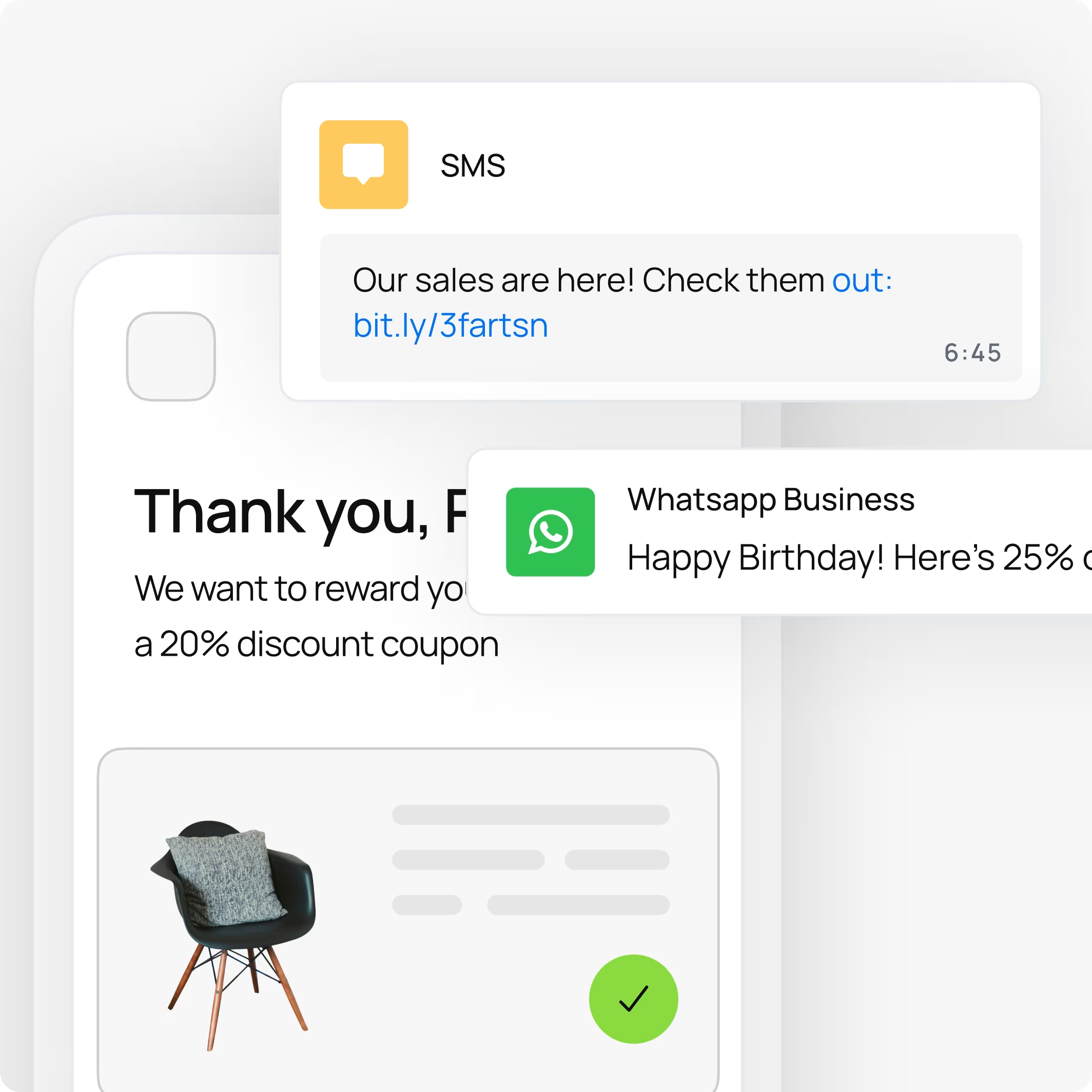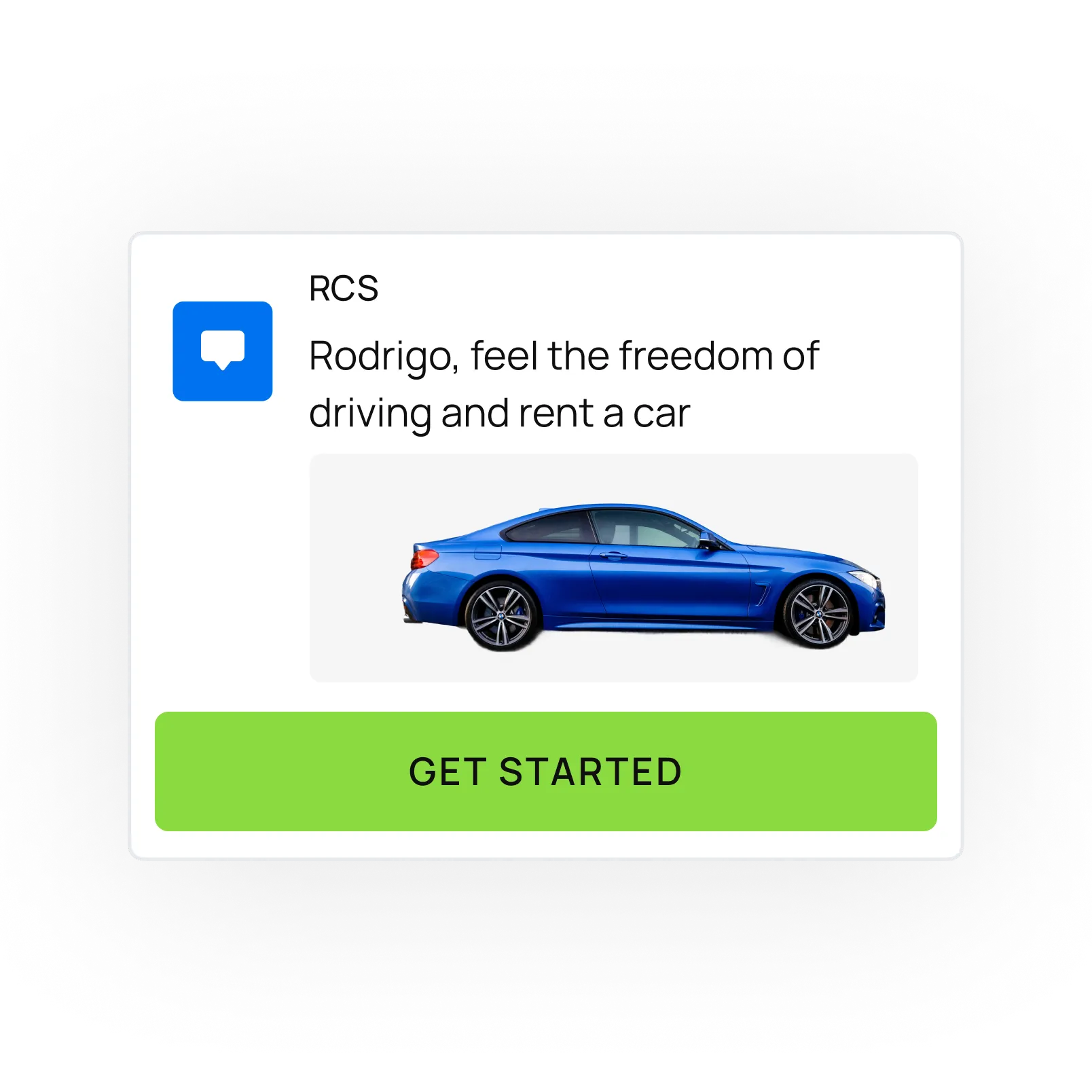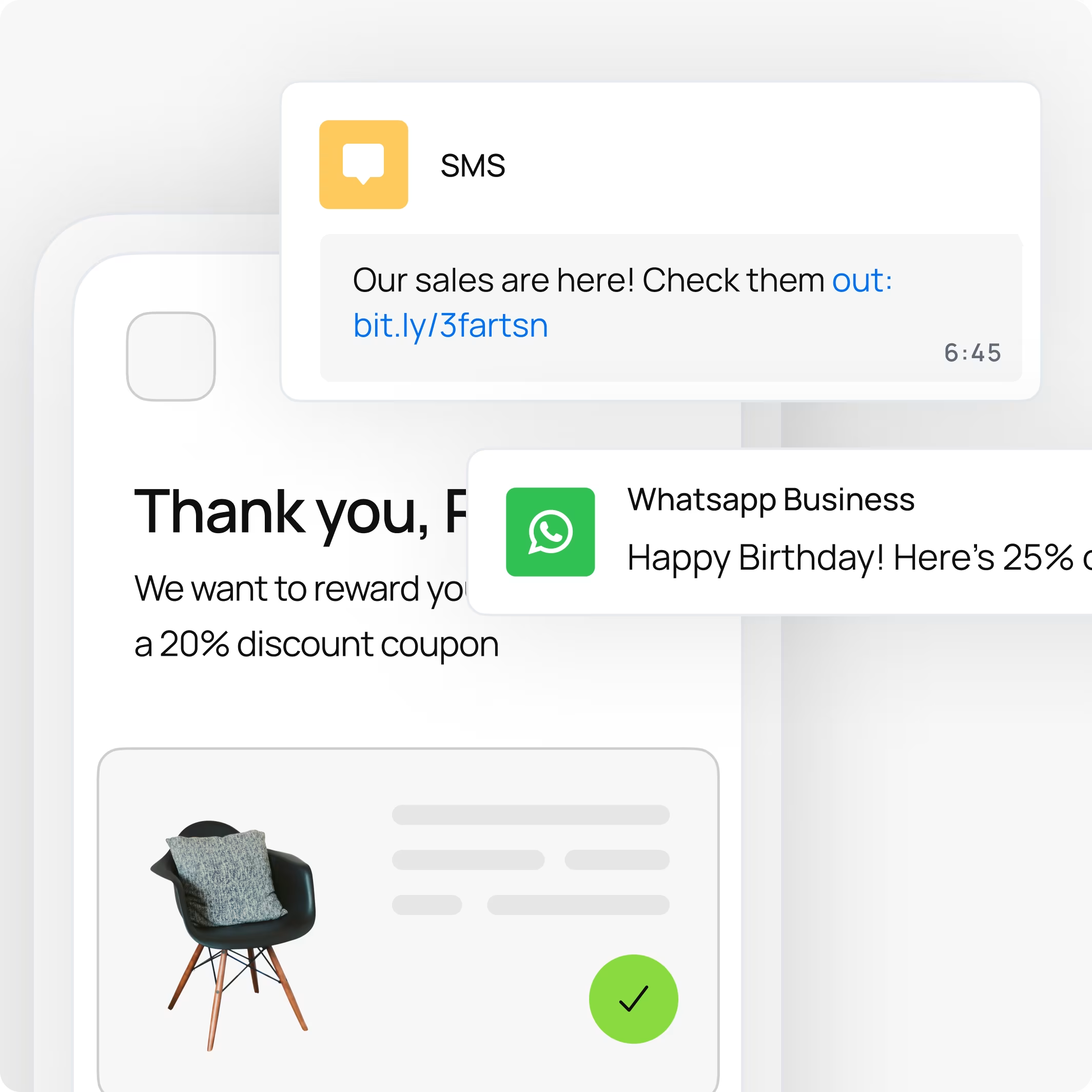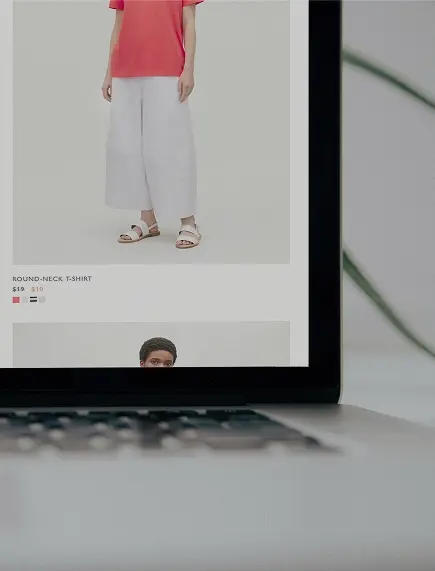Blog
What is RCS Marketing?: Everything You Need to Know


Introduction to RCS Marketing
Remember the days of T9 predictive text on your old Nokia phone? Typing out messages like “C U L8R” was a chore, but it felt revolutionary at the time. Fast forward to today, and it’s surprising to realize that the same basic technology—SMS (Short Message Service)—is still the backbone of most business texting. While SMS has been a reliable workhorse for decades, it’s starting to show its age in a world that demands richer, faster, and more secure communication.
SMS was designed in the 1980s, long before smartphones, apps, or even the internet as we know it existed. It’s limited to 160 characters of plain text, lacks encryption, and offers no support for multimedia or interactivity. These limitations create real problems for businesses and consumers alike. For example, SMS messages are vulnerable to security risks like spoofing and phishing, making them a less-than-ideal channel for sensitive communications. On top of that, the lack of rich media or interactive features means businesses can’t fully engage their audiences, leading to lower open rates and missed opportunities.
It’s clear that SMS needs a modern replacement—one that keeps up with today’s expectations for seamless, secure, and engaging communication. Enter RCS (Rich Communication Services), the next-generation messaging protocol that’s set to revolutionize how businesses connect with their customers. With RCS, gone are the days of plain text and clunky interfaces. Instead, businesses can send interactive, visually rich messages that feel more like a conversation than a broadcast.
In this guide, we’ll explore everything you need to know about RCS marketing, from what it is and how it works to why it’s the future of business messaging. Whether you’re a marketer looking to boost engagement or a business owner seeking better ways to connect with your audience, RCS is the upgrade you’ve been waiting for. Let’s dive in!

What is RCS? What Does RCS Stand For?
RCS, or Rich Communication Services, is an advanced messaging protocol designed to replace the outdated SMS (Short Message Service) with a more modern, feature-rich experience. Think of it as the next evolution of texting—a messaging platform that combines the simplicity and universality of SMS with the enhanced capabilities of app-based messaging like WhatsApp or iMessage.
The name Rich Communication Services perfectly encapsulates its purpose: to bring richer, more dynamic communication to the world of messaging. Unlike traditional SMS, which is limited to plain text and 160 characters, RCS delivers a more immersive and interactive experience. It was developed in the late 2000s by the GSM Association (GSMA), the organization representing mobile network operators worldwide. The goal was to create a modern messaging standard that could keep up with the rapid advancements in mobile technology and user expectations.
While SMS had served its purpose for decades, it was clear that a more robust solution was needed to compete with the growing popularity of app-based messaging platforms like WhatsApp and Facebook Messenger. RCS was designed to modernize text messaging by incorporating features that users had come to expect from messaging apps, such as:
- Rich media support (images, videos, GIFs, and audio files).
- Interactive elements (clickable buttons, carousels, quick replies, and even in-chat payment options).
- Enhanced group chat capabilities.
- Read receipts and typing indicators.
- End-to-end encryption for improved security.
These features make conversations more dynamic and engaging, whether you’re chatting with friends or interacting with a business. RCS is designed to work seamlessly on modern smartphones and messaging apps, making it accessible to a wide audience.
One of the most significant roles of RCS is bridging the gap between SMS and app-based messaging. While SMS is universal but limited, and app-based messaging is feature-rich but fragmented, RCS offers the best of both worlds. It provides the reach and accessibility of SMS while delivering the rich, interactive experience of messaging apps. For businesses, this means being able to connect with customers in a more meaningful way, without requiring them to download a separate app.
Over the years, RCS has gained significant traction, with major players like Google championing its adoption. Google’s integration of RCS into its Android Messages app has been a game-changer, bringing the technology to millions of users worldwide. While challenges remain—such as Apple’s reluctance to fully support RCS on iPhones—the momentum behind RCS continues to grow, signaling a bright future for this next-generation messaging standard.
In essence, RCS is the future of messaging—a powerful tool that transforms how we communicate, both personally and professionally. It’s not just an upgrade to SMS; it’s a complete reimagining of what messaging can be.

What is RCS Marketing?
RCS marketing is the use of Rich Communication Services (RCS) technology for business communication and marketing campaigns. It represents a significant leap forward from traditional SMS marketing, enabling businesses to send interactive, visually appealing messages that captivate customers and drive meaningful engagement.
At its core, RCS marketing allows businesses to go beyond plain text and deliver rich, dynamic content directly to their customers’ messaging apps. This includes high-resolution images, videos, GIFs, and audio files, all of which can be embedded directly into the message. But RCS doesn’t stop at rich media—it also introduces interactive elements like clickable buttons, carousels, and quick replies. These features transform static messages into engaging experiences, enabling customers to take actions like booking appointments, making purchases, or responding to surveys without ever leaving the chat.
Key Features of RCS Marketing
- Rich Media Support:
- Send visually compelling content like product images, promotional videos, or animated GIFs to grab attention and convey your message effectively.
- Interactive Elements:
- Use buttons, carousels, and quick replies to create two-way conversations. For example, a restaurant could send a menu with clickable options for reservations or a retailer could showcase products in a swipeable carousel.
- Enhanced Analytics and Tracking:
- Gain deeper insights into campaign performance with metrics like open rates, click-through rates, and customer responses. This data helps businesses optimize their messaging strategies for better results.
Benefits of RCS Marketing for Businesses
- Higher Engagement Rates:
- The interactive and visually rich nature of RCS messages captures attention more effectively than traditional SMS, leading to higher open and response rates.
- Improved Customer Experience:
- RCS allows businesses to provide a seamless, app-like experience within the messaging app. Customers can interact with brands in real-time, making the process more convenient and enjoyable.
- Increased Conversion Rates:
- By enabling direct actions like purchases or bookings within the message, RCS reduces friction in the customer journey, leading to higher conversion rates.
For example, a travel agency could use RCS marketing to send a personalized message with a video of a dream destination, interactive buttons for booking, and quick replies for customer inquiries. This not only enhances the customer experience but also drives measurable results for the business.
In short, RCS marketing is a game-changer for businesses looking to elevate their communication strategies. It combines the reach of SMS with the engagement of app-based messaging, creating a powerful tool for building stronger customer relationships and driving business growth.

How Does RCS Marketing Work
RCS marketing leverages the advanced capabilities of Rich Communication Services (RCS) to deliver interactive, visually rich messages directly to customers’ messaging apps. But how does it actually work behind the scenes? Let’s break it down.
The Technical Process of Sending RCS Messages
- Message Creation:
- Businesses design RCS messages using specialized platforms or tools that support RCS features. These messages can include rich media (images, videos, GIFs), interactive elements (buttons, carousels, quick replies), and personalized content.
- Message Delivery:
- Once the message is created, it is sent through an RCS-enabled platform or service provider. These platforms act as intermediaries, ensuring the message is formatted correctly and delivered to the recipient’s device.
- Carrier and Device Compatibility:
- The message is routed through the recipient’s mobile carrier, which must support RCS technology. The recipient’s device also needs to be RCS-compatible, meaning it runs on an operating system (like Android) and uses a messaging app (like Google Messages) that supports RCS.
- Customer Interaction:
- When the message arrives, the recipient sees it in their messaging app as a rich, interactive experience. They can engage with the content—click buttons, swipe through carousels, or reply directly—all within the same chat window.
-
Analytics and Tracking:
-
Businesses can track the performance of their RCS campaigns using built-in analytics. Metrics like open rates, click-through rates, and response rates provide valuable insights to optimize future campaigns.
-
Examples of RCS Marketing Campaigns
-
Appointment Reminders:
-
A healthcare provider sends an RCS message to remind a patient of their upcoming appointment. The message includes a video explaining what to expect, a button to confirm or reschedule, and a quick reply for questions.
-
-
Product Promotions:
-
A retail brand sends a carousel of new products with high-resolution images, prices, and “Buy Now” buttons. Customers can browse the products and make purchases directly within the message.
-
-
Customer Support:
-
A telecom company uses RCS to provide real-time support. Customers receive a message with troubleshooting tips, a button to chat with an agent, and a quick reply to check their account balance.
-
-
Event Invitations:
-
A concert organizer sends an interactive RCS message with a video trailer, a button to purchase tickets, and a quick reply to share the event with friends.
-
-
Loyalty Programs:
-
A coffee shop sends a personalized RCS message with a discount code, a button to reload their loyalty card, and a quick reply to locate the nearest store.
-
In essence, RCS marketing works by combining advanced technology with creative messaging strategies to deliver engaging, actionable content to customers. It’s a powerful way for businesses to connect with their audience in a more meaningful and impactful way.

Popular Omnichannel Messaging Platforms and Tools
Choosing the right omnichannel messaging platform is crucial for delivering seamless, personalized, and efficient customer experiences. With so many tools available, it’s important to know what features to look for and how to select the best fit for your business. Here’s a guide to help you navigate the options and understand why indigitall stands out as a top choice.
Key Features to Look for in an Omnichannel Messaging Platform
When evaluating omnichannel messaging tools, prioritize platforms that offer the following features:
-
Channel Integration: The platform should support multiple communication channels, such as email, SMS, push notifications, social media, and chatbots, all in one place.
-
Automation: Look for tools that allow you to automate workflows, such as sending triggered messages based on customer behavior or scheduling campaigns in advance.
-
Personalization: The ability to tailor messages using customer data (e.g., name, preferences, purchase history) is essential for creating meaningful interactions.
-
Analytics and Reporting: Robust analytics help you track performance metrics like open rates, click-through rates, and conversions, enabling data-driven decision-making.
-
Scalability: Ensure the platform can grow with your business and handle increasing volumes of customer interactions.
-
Ease of Use: A user-friendly interface and intuitive setup process are critical for efficient implementation and management.
-
Integration Capabilities: The platform should seamlessly integrate with your existing tools, such as CRM systems, e-commerce platforms, and customer support software.
Tips for Choosing the Right Tool for Your Business
-
Assess Your Budget: Choose a tool that aligns with your financial resources while offering the features you need.
-
Evaluate Your Team’s Expertise: Consider your team’s technical skills. Some platforms, like Twilio, are developer-friendly, while others, like HubSpot, are designed for non-technical users.
-
Test Before Committing: Take advantage of free trials or demos to evaluate the platform’s usability and features.
-
Read Reviews and Case Studies: Look for feedback from businesses similar to yours to gauge the tool’s effectiveness and reliability.
-
Prioritize Customer Support: Ensure the platform offers reliable customer service to help you troubleshoot issues and maximize its potential.
-
Define Your Goals: Determine what you want to achieve with omnichannel messaging—whether it’s improving customer support, increasing sales, or boosting engagement.
Why indigitall?
- Among the many omnichannel messaging platforms available, indigitall stands out for its innovative approach and comprehensive features. Here’s why it’s a top choice for businesses:
-
Unified Platform: indigitall integrates all your communication channels—push notifications, email, SMS, chatbots, and more—into a single, easy-to-use platform.
-
Advanced Personalization: Leverage AI and customer data to deliver hyper-personalized messages that resonate with your audience.
-
Real-Time Automation: Automate campaigns and trigger messages based on real-time customer behavior, ensuring timely and relevant interactions.
-
Powerful Analytics: Gain deep insights into campaign performance and customer engagement with indigitall’s robust analytics tools.
-
Scalability and Flexibility: Whether you’re a small business or a large enterprise, indigitall scales to meet your needs and adapts to your growth.
-
Seamless Integrations: indigitall integrates effortlessly with popular CRM, e-commerce, and marketing tools, making it a versatile choice for any business.
-
Exceptional Customer Support: indigitall offers dedicated support to help you optimize your omnichannel strategy and resolve any issues quickly.
By choosing a platform like indigitall, you can elevate your omnichannel messaging strategy, delivering exceptional customer experiences and driving measurable results for your business.
-

Best Practices for Implementing Omnichannel Messaging
Implementing an omnichannel messaging strategy requires careful planning, execution, and continuous improvement. To ensure success, follow these best practices that will help you create seamless, personalized, and effective customer experiences across all touchpoints.
1. Map the Customer Journey to Identify Touchpoints
Understanding your customer’s journey is the foundation of a successful omnichannel strategy. Start by mapping out every stage of the journey—from awareness and consideration to purchase and post-purchase support. Identify the key touchpoints where customers interact with your brand, such as:
-
Visiting your website or app.
-
Engaging on social media.
-
Receiving email or SMS notifications.
-
Contacting customer support.
By visualizing the journey, you can pinpoint opportunities to deliver consistent and relevant messaging at each stage. For example, a customer who browses products online might appreciate a follow-up email with personalized recommendations.
2. Ensure Data Synchronization Across Platforms
A seamless omnichannel experience relies on having accurate, up-to-date customer data across all platforms. Ensure that your CRM, marketing tools, and communication channels are integrated and share data in real time. This synchronization allows you to:
-
Maintain a unified view of each customer.
-
Deliver personalized messages based on the latest interactions.
-
Avoid inconsistencies, such as sending duplicate or conflicting messages.
-
For instance, if a customer updates their contact information on your website, that change should automatically reflect in your email and SMS platforms.
3. Train Your Team to Use Omnichannel Tools Effectively
Your team plays a critical role in executing your omnichannel strategy. Provide comprehensive training to ensure they understand how to use the tools and platforms effectively. Focus on:
Navigating the omnichannel platform’s features.
-
Creating and managing campaigns.
-
Analyzing data to optimize performance.
-
Handling customer interactions across channels.
-
A well-trained team can maximize the potential of your omnichannel tools, ensuring smooth operations and better customer experiences.
4. Test and Optimize Your Messaging Strategy Regularly
Omnichannel messaging is not a “set it and forget it” strategy. Regularly test and optimize your campaigns to ensure they’re delivering the desired results. Here’s how:
-
A/B Testing: Experiment with different message formats, tones, and timing to see what resonates best with your audience.
-
Monitor Metrics: Track key performance indicators (KPIs) like open rates, click-through rates, conversion rates, and customer satisfaction scores.
-
Gather Feedback: Collect customer feedback to understand their preferences and pain points.
-
Iterate and Improve: Use insights from testing and analytics to refine your messaging and strategies.
For example, if you notice that SMS messages have higher engagement rates than emails, you might allocate more resources to SMS campaigns.
By following these best practices—mapping the customer journey, synchronizing data, training your team, and continuously optimizing your strategy—you can build a robust omnichannel messaging system that delights customers and drives business growth.
Challenges of Omnichannel Messaging and How to Overcome Them
While omnichannel messaging offers significant benefits, implementing it successfully comes with its own set of challenges. From technical hurdles to maintaining a human touch, businesses often face obstacles that can hinder their efforts. Here’s a look at the most common challenges and practical solutions to overcome them.
Common Challenges
1. Data Silos and Integration Issues
One of the biggest challenges is dealing with data silos—where customer information is trapped in separate systems or platforms. This can lead to inconsistent messaging, missed opportunities, and a fragmented customer experience.
Solution:
-
Invest in an integrated omnichannel platform that consolidates data from all channels into a single system.
-
Use APIs to connect your CRM, marketing tools, and communication platforms, ensuring real-time data synchronization.
-
Regularly audit your systems to identify and eliminate silos.
2. Maintaining Consistency Across Channels
Delivering a unified brand voice and message across multiple channels can be difficult, especially when different teams manage different platforms. Inconsistencies can confuse customers and weaken your brand identity.
Solution:
-
Create a centralized content strategy and style guide to ensure all teams follow the same tone, messaging, and branding.
-
Use collaboration tools to align teams and streamline communication.
-
Regularly review and update your messaging to maintain consistency.
3. Balancing Automation with a Human Touch
While automation is essential for efficiency, over-reliance on it can make interactions feel impersonal and robotic. Customers still value human connection, especially in complex or sensitive situations.
Solution:
-
Use automation for routine tasks (e.g., order confirmations, appointment reminders) but leave room for human intervention when needed (e.g., handling complaints or complex inquiries).
-
Train your team to step in seamlessly when automation falls short.
-
Personalize automated messages using customer data to make them feel more human and relevant.
Practical Solutions to Address These Challenges
-
Adopt the Right Technology: Choose an omnichannel messaging platform that offers robust integration, automation, and analytics capabilities. Tools like HubSpot, Salesforce, and indigitall can help streamline your efforts.
-
Centralize Data Management: Implement a centralized customer data platform (CDP) to unify data from all sources. This ensures a single, accurate view of each customer.
-
Train Your Teams: Equip your teams with the skills and knowledge they need to manage omnichannel messaging effectively. Regular training sessions and workshops can help them stay updated on best practices.
-
Monitor and Optimize: Continuously track the performance of your omnichannel campaigns and gather customer feedback. Use these insights to refine your strategy and address any gaps.
-
Prioritize Customer-Centricity: Always keep the customer at the center of your strategy. Focus on delivering value, personalization, and seamless experiences at every touchpoint.
By proactively addressing these challenges and implementing practical solutions, businesses can unlock the full potential of omnichannel messaging, creating meaningful connections with customers and driving long-term success.
RCS Marketing vs. SMS Marketing
When it comes to business messaging, RCS marketing and SMS marketing are often compared, but they offer vastly different experiences. Here’s a detailed comparison of their features, capabilities, and effectiveness:
- Limitations of SMS Marketing
- Plain Text Only:
- SMS is limited to 160 characters of plain text, making it difficult to convey complex or visually appealing messages. This restricts creativity and limits the ability to fully communicate a brand’s message.
- Lack of Interactivity:
- SMS doesn’t support interactive elements like buttons, carousels, or quick replies. This means customers can’t take direct actions within the message, leading to lower engagement rates.
- No Rich Media:
- SMS cannot include images, videos, GIFs, or audio files. This makes it less engaging compared to modern messaging platforms that rely on visual content.
- Limited Branding Opportunities:
- SMS messages lack branding elements like logos or verified sender profiles, which can make them appear less trustworthy or professional.
- Basic Analytics:
- SMS provides minimal insights into campaign performance, such as delivery reports, but lacks detailed metrics like open rates or click-through rates.
- SMS provides minimal insights into campaign performance, such as delivery reports, but lacks detailed metrics like open rates or click-through rates.
- Plain Text Only:
- Advantages of RCS Marketing
- Rich Media Support:
- RCS allows businesses to send high-resolution images, videos, GIFs, and audio files, making messages more visually appealing and engaging.
- Interactive Features:
- With buttons, carousels, and quick replies, RCS enables two-way conversations and direct actions within the message. For example, customers can book appointments, make purchases, or respond to surveys without leaving the chat.
- Enhanced Branding Opportunities:
- RCS supports branded profiles, verified sender IDs, and rich visuals, helping businesses build trust and recognition with their audience.
- Higher Engagement Rates:
- The interactive and visually rich nature of RCS leads to higher open rates, click-through rates, and customer responses compared to SMS.
- Advanced Analytics and Tracking:
- RCS provides detailed insights into campaign performance, including metrics like open rates, click-through rates, and customer interactions. This data helps businesses optimize their messaging strategies.
- Personalization:
- RCS allows businesses to send personalized messages based on customer preferences, behavior, and location, making the communication more relevant and effective.
- RCS allows businesses to send personalized messages based on customer preferences, behavior, and location, making the communication more relevant and effective.
- Rich Media Support:
- Effectiveness Comparison
- SMS: While SMS is reliable and universally accessible, its limitations make it less effective for modern marketing campaigns that require engagement and interactivity.
- RCS: RCS combines the reach of SMS with the engagement of app-based messaging, making it a more effective tool for businesses looking to connect with customers in a meaningful way.
In summary, while SMS is a tried-and-true method for basic communication, RCS marketing offers a more dynamic, engaging, and effective way to connect with customers. By leveraging rich media, interactive features, and advanced analytics, RCS empowers businesses to create memorable experiences that drive results.
Benefits of RCS Marketing for Businesses
In today’s fast-paced digital world, businesses are constantly searching for ways to cut through the noise and connect with their customers. Enter RCS marketing—a powerful tool that not only grabs attention but also drives meaningful engagement. Here’s how RCS marketing is transforming the way businesses communicate and why it’s a must-have in your marketing strategy.
1. Stand Out in Crowded Inboxes
Let’s face it: consumers are bombarded with messages every day. Emails, SMS texts, app notifications—it’s overwhelming. Most of these messages get ignored or deleted. But RCS messages are different.
With rich media like images, videos, and GIFs, and interactive elements like buttons, carousels, and quick replies, RCS messages are designed to capture attention. Imagine sending a promotional message that includes a video showcasing your product, a button to shop now, and a quick reply for customer questions. It’s not just a message—it’s an experience.
Unlike traditional SMS, which is limited to plain text, RCS allows businesses to create visually appealing and engaging content that stands out in crowded inboxes.
2. Boost Customer Engagement and Retention
Engagement is the lifeblood of any successful marketing campaign. RCS takes engagement to the next level by turning one-way communication into two-way conversations.
For example, a restaurant can send an RCS message with a video of their new menu, a button to book a table, and a quick reply for dietary inquiries. Customers can interact with the message in real-time, making the experience seamless and enjoyable.
This level of interaction doesn’t just increase engagement—it builds stronger relationships with customers. When customers feel heard and valued, they’re more likely to stay loyal to your brand.
3. Personalized and Targeted Marketing
Personalization is no longer a nice-to-have; it’s a must-have. Customers expect brands to understand their needs and preferences, and RCS makes it easy to deliver.
With RCS, businesses can send highly personalized messages based on customer data. For instance, a travel agency could send a message like: “Hi Sarah, we noticed you love beach destinations. Check out this exclusive deal for Bali!” The message could include a stunning video of Bali, a button to book the trip, and a quick reply to chat with an agent.
This level of personalization not only increases the relevance of your messages but also drives higher conversion rates. According to a study by Epsilon, 80% of consumers are more likely to make a purchase when brands offer personalized experiences.
4. Cost-Effective and High ROI
Marketing budgets are tight, and businesses need to make every dollar count. RCS marketing offers a high return on investment (ROI) compared to other channels like social media ads or email campaigns.
Here’s why:
-
Higher Open Rates: RCS messages have significantly higher open rates than SMS or email.
-
Better Engagement: Interactive features like buttons and carousels drive higher click-through rates.
-
Lower Costs: RCS combines the reach of SMS with the engagement of app-based messaging, all at a fraction of the cost of traditional advertising.
For example, a small business can run an RCS campaign that includes videos, interactive buttons, and real-time customer support—without breaking the bank. And because RCS messages are more engaging, businesses see better results for their investment.
5. Build Trust with Verified Branding
Trust is critical in business communication. RCS helps businesses build trust by allowing them to use verified sender profiles and branded messaging. When customers see your logo and a verified checkmark, they know the message is legitimate and safe to engage with. Investing in professional logo design enhances this effect, making your brand instantly recognizable and reinforcing credibility at first glance.
This is especially important in an era where phishing scams and spam messages are on the rise. RCS ensures your messages stand out as trustworthy and professional.
How to Get Started with RCS Marketing
RCS marketing is a powerful tool for businesses looking to elevate their customer communication, but getting started can feel overwhelming if you’re new to the technology. Don’t worry—we’ve broken it down into simple, actionable steps to help you launch your first RCS campaign with confidence.
Step 1: Partner with an RCS Service Provider
The first step in adopting RCS marketing is to find a reliable RCS service provider. These platforms specialize in creating, managing, and sending RCS campaigns, making the process seamless for businesses.
-
What to Look for in a Provider:
-
Expertise in RCS technology.
-
Easy integration with your existing marketing tools.
-
Support for rich media and interactive features.
-
Advanced analytics and reporting capabilities.
-
Popular providers include Google’s Business Messages, Twilio, and indigitall. These platforms offer end-to-end solutions to help you get started quickly.
Step 2: Ensure Your Audience Has RCS-Enabled Devices
RCS marketing works best when your audience can receive and interact with your messages. While RCS is widely supported on Android devices (via apps like Google Messages), it’s not yet fully supported on Apple’s iMessage.
-
How to Check Compatibility:
-
Confirm that your target audience uses Android devices with RCS-enabled messaging apps.
-
Use your RCS service provider’s tools to identify RCS-compatible users in your contact list.
-
If a significant portion of your audience uses iPhones, consider combining RCS with other messaging channels to ensure everyone can engage with your campaigns.
Step 3: Design Engaging and Interactive RCS Campaigns
The success of your RCS marketing efforts depends on the quality of your messages. Here’s how to create campaigns that captivate and convert:
-
Use Rich Media:
-
Include high-resolution images, videos, and GIFs to make your messages visually appealing.
-
Example: A fashion retailer could send a carousel of new arrivals with images and prices.
-
-
Add Interactive Elements:
-
Use buttons, quick replies, and carousels to encourage customer interaction.
-
Example: A restaurant could send a message with a “Book Now” button and a quick reply for dietary preferences.
-
-
Personalize Your Messages:
-
Use customer data to tailor your messages. Include the recipient’s name, past purchase history, or location.
-
Example: “Hi [Name], we noticed you love running. Check out our new collection of running shoes!”
-
-
Include Clear Calls-to-Action (CTAs):
-
Make it easy for customers to take the next step. Use action-oriented language like “Shop Now,” “Book Today,” or “Learn More.”
-
Step 4: Monitor and Optimize Performance Using Analytics
One of the biggest advantages of RCS marketing is the ability to track and measure campaign performance. Use your RCS service provider’s analytics tools to:
-
Track Key Metrics:
-
Open rates, click-through rates, and response rates.
-
Conversion rates and ROI.
-
-
Optimize Your Campaigns:
-
Identify what’s working and what’s not.
-
Test different formats, CTAs, and content to improve results over time.
-
For example, if you notice that messages with videos have higher engagement, focus on creating more video content for future campaigns.
Step 5: Tips for Creating Effective RCS Marketing Messages
To make the most of your RCS campaigns, keep these best practices in mind:
-
Keep It Concise:
-
While RCS allows for rich media, your message should still be clear and to the point.
-
-
Focus on Value:
-
Provide something useful to the customer, whether it’s a discount, helpful information, or a personalized recommendation.
-
-
Test and Iterate:
-
Experiment with different formats, visuals, and CTAs to see what resonates with your audience.
-
-
Ensure Mobile Optimization:
-
Make sure your images, videos, and buttons are optimized for mobile devices.
-
-
Be Timely:
-
Send messages at the right time to maximize engagement. For example, a reminder for an upcoming sale should go out a day or two before the event.
-
indigitall: A Leader in RCS Marketing Solutions
When it comes to RCS marketing, indigitall stands out as a trusted partner for businesses looking to harness the power of next-generation messaging. With its cutting-edge technology and deep expertise, indigitall is helping companies of all sizes transform their customer communication and drive measurable results.
Why Choose indigitall?
indigitall specializes in enabling businesses to leverage RCS technology to its fullest potential. Whether you’re a small business or a global enterprise, indigitall provides the tools and support you need to create impactful, interactive campaigns that resonate with your audience.
Here’s what sets indigitall apart:
Key Features of indigitall’s RCS Solutions
-
Easy Integration with Existing Marketing Tools:
-
indigitall seamlessly integrates with your current marketing stack, making it easy to incorporate RCS into your existing workflows. Whether you’re using CRM systems, email marketing platforms, or analytics tools, indigitall ensures a smooth transition to RCS marketing.
-
-
Advanced Analytics and Reporting:
-
With indigitall, you don’t just send messages—you measure their impact. The platform provides detailed analytics on key metrics like open rates, click-through rates, and conversions, helping you optimize your campaigns for maximum ROI.
-
-
Support for Rich Media and Interactive Messaging:
-
indigitall empowers businesses to create visually stunning and highly interactive RCS campaigns. From high-resolution images and videos to clickable buttons and carousels, you can design messages that captivate and engage your audience.
-
-
Personalization at Scale:
-
indigitall’s platform allows you to send personalized messages based on customer data, ensuring your campaigns are relevant and impactful. Whether it’s addressing customers by name or tailoring offers based on their preferences, indigitall makes personalization easy.
-
-
End-to-End Support:
-
From strategy to execution, indigitall provides end-to-end support to help you get the most out of RCS marketing. Their team of experts is there to guide you every step of the way, ensuring your campaigns are successful from day one.
How indigitall Simplifies RCS Marketing for Businesses
-
Adopting new technology can be daunting, but indigitall makes it easy. Here’s how:
-
User-Friendly Platform: indigitall’s intuitive interface ensures that even beginners can create and manage RCS campaigns with ease.
-
Scalable Solutions: Whether you’re a small business or a large enterprise, indigitall’s solutions are designed to scale with your needs.
-
Expert Guidance: indigitall’s team of experts provides ongoing support, from campaign planning to performance optimization.
Proven Results: With a track record of successful campaigns across industries, indigitall has the expertise to help you achieve your goals.












